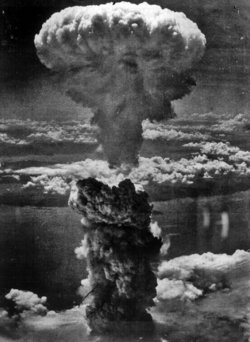Watch out: Here comes $4 gasoline
Prices were supposed to peak below $3 a gallon, but refinery problems, strong demand could push them much higher.
By Steve Hargreaves,
CNNMoney.com staff writer
April 26 2007: 12:56 PM EDT
NEW YORK (CNNMoney.com) -- Gasoline prices, already above $3 a gallon in some states, could charge higher this summer and hit $4 a gallon in some locations, according to one industry expert.
Pump prices were supposed to peak below $3 a gallon this May, then drop off before the summer driving season got into full swing, according to the Energy Department's price forecast.
Special Report: full coverage
A proposed gas guzzler tax in California has some in an uproar. CNN's Sumi Das reports. (April 8)
Play video
Well, we're not even out of April yet, and the nationwide average price for a gallon of unleaded regular has hit $2.87.
Behind high gas prices: The refinery crunch
One big factor driving prices: gasoline inventories continue to fall. After a promising one-week boost in refining activity, the latest report Wednesday actually shows refining activity falling. And demand is already soaring, before the summer driving season is in full swing.
What this means for prices is obvious, and to most drivers it is not good news.
"More and more communities are going to see gasoline that approaches or exceeds $4 a gallon," said John Kilduff, an energy analyst at Man Financial in New York. "Where we're currently at with prices, that's a given."
While geopolitical tensions have driven up the cost of crude oil, which accounts for about half the cost of a gallon of gas, refinery problems here in the United States are also to blame for the price jump.
Five states - California, Hawaii, Oregon, Washington and Nevada - already have average prices above $3 a gallon, according to the motorist organization AAA. In California, the average price of gas has reached $3.35 a gallon.
Kilduff said it will be in those states, and possibly New England and the northern Midwest, where prices have the best chance of hitting $4 a gallon, mostly as a result of localized refinery problems.
The other factor behind $4 gas: Americans can't seem to get enough of it.
The government said demand over the last four weeks rose by 2.3 percent. The average rate of growth is 1.5 percent.
With the current supply and demand situation, Kilduff thinks nationwide prices will have no trouble breaking the old non-inflation-adjusted record of $3.057 a gallon, hit in 2005 just after Hurricane Katrina.
It's worth noting that while $4 gasoline would be a record for American motorists, in Europe it's common. The average price for a gallon of gas in the Netherlands is over $7, and it's over $6 in many other European countries.
Also, Americans earn a lot more now than they did in 1980, so by some measures what people spend now on gas is only half of what is used to be.
In 1980, the average American had to work 105 minutes to buy enough gas to drive the average car 100 miles, David Wyss, chief economist at Standard & Poor's, said in a study last year. By 2006, the average American needed to work only 52 minutes, thanks in part to better fuel efficiency but mostly due to higher wages.
Up, up and ...
Retail gas prices have been climbing steadily as one refinery outage after another crimped production and U.S. drivers consumed ever more in spite of rising prices.
By early this week, retail prices had risen 32 percent since the start of the year, according to the Lundberg Survey.
And the Energy Information Administration said Wednesday that gasoline supplies, which have fallen 13 percent since early February, were "well below the lower end of the average range."
Moreover, EIA reported refinery utilization fell, with refineries running at only 87.8 percent of capacity last week.
Traders had been watching that number, and gasoline future prices fell sharply last week, when refinery activity jumped for first time in several weeks.
But Tuesday's refining news caused gasoline futures to spike more than 5 cents a gallon to $2.27, their highest price since last August, lessening the chances retail prices will fall anytime soon.
An EIA analyst, who forecast a high of $2.87 just two weeks ago, couldn't say if the agency's next forecast, due out May 8, will be revised higher, although it seems likely.
"Obviously, April is not progressing as we had hoped," said EIA economist Tancred Lidderdale. "We're continually humbled by the market."
Big Oil's money machine
(In accordance with Title 17 U.S.C. Section 107, this material is distributed without profit to those who have expressed a prior interest in receiving the included information for research and educational purposes. The Lantern has no affiliation whatsoever with the originator of this article nor is The Lantern endorsed or sponsored by the originator.)
....And The Truth Shall Set Us Free
Thursday, April 26, 2007
Subscribe to:
Post Comments (Atom)







No comments:
Post a Comment